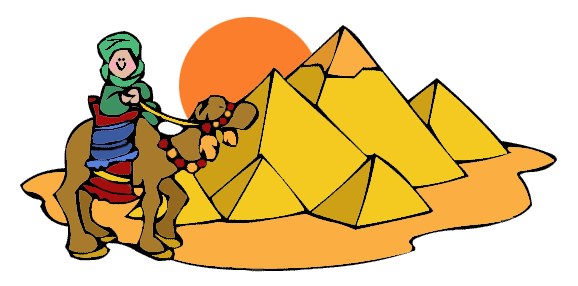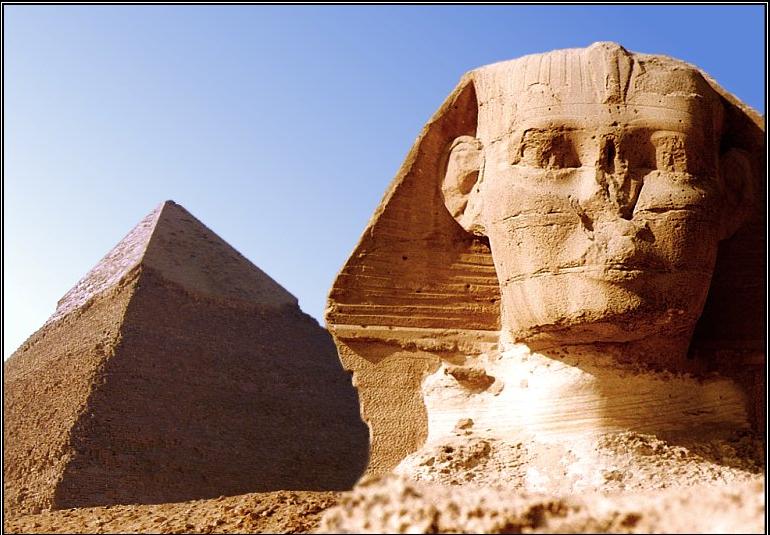
This site has pages on Religion, Maps of modern and ancient Egypt, some General Information, Warfare and how the Egyptians spent their leisure time.
To see the different pages, simply click on the links on the toolbar above.
I hope you like looking around and finding out more on Ancient Egypt.

They are so cleverly structured that they are still standing, some 4,000 years later!
Of the seven ancient wonders of the world, the Great Pyramid of Giza is the only one left standing.
People say that slaves were made to build these pyramids, but in fact it was the people of Egypt.
Every year when the Nile River flooded, the people that lived around the Nile, came and helped build the pyramids.
The pyramids were made over many years. The pharaohs usually paid the people in food,
as their crops were being flooded.
When a pharaoh died, they were put in a tomb in their pyramid. All of the tombs were robbed, bar one: Tutankhamun.

- From the ruined buildings and artifacts left behind. The hot, dry desert air helped to preserve the items.
- Important Egyptians were buried with some of their personal posessions like furniture and jewellery.
- The walls of their tombs were richly decorated with paintings of both everyday life and the many gods.
- They had writing which we can read. The background of this page has some Egyptian heiroglyphics on.
- The cartouche to the left says 'Hannah'

But now we are able to decipher hieroglyphs thanks to a special chunk of rock and a determined Egyptologist. In 1799, a French soldier digging a fort in Rosetta, Egypt found a large black stone with three different types of writing on it. The writing was a message about Ptolemy V, who was ruler of Egypt at the time. Because the message was written during the time when the Greeks ruled Egypt, one of the three languages was Greek. The other two were demotic and hieroglyphic.
People realized that the three languages on 'Rosetta Stone' were saying the same thing.
Even though people could read Greek, they couldn't work out how to match the Greek words with the hieroglyphs. For decades, no one was able to understand how the hieroglyphic message corresponded to the Greek one.
Finally, in 1822, a French Egyptologist named Jean François Champollion figured it out.
He realized that the hieroglyphs that spelled "Ptolemy" were enclosed in a cartouche (like mine above), so he was able to match it up to the Greek spelling. This discovery enabled him to equate the unfamiliar hieroglyphs with familiar Greek words and to translate the entire message.
This stone lives in the British Museum in London.